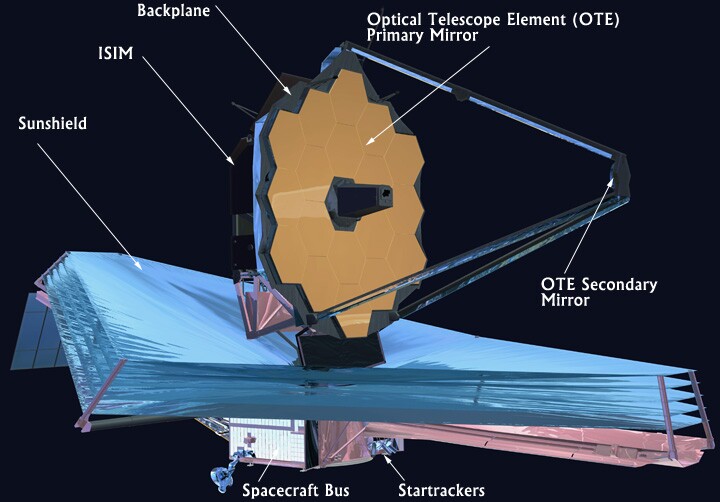NASA's James Webb Space Telescope has got into the selfie scene. As part of the telescope's extensive cryogenic testing, NASA engineers had the giant instrument snap an image of itself to test the alignment of the individual primary mirror segments and how they interact with the spacecraft's intricate optical systems.
Testing even a small telescope is an exacting business that takes tremendous time and patience. If the telescope is a large research job, the task is many times more difficult. And if that large research telescope is to be installed in orbit where it will be subjected simultaneously to temperatures well above the boiling point of water and hundreds of degrees below freezing, the testing process becomes monumental.
The key parts of the Webb are completing a prolonged stint in NASA's giant cryogenic test chamber, and the space agency is currently comparing the optical tests results from inside the chamber with room temperature results outside the chamber to determine how well the optics are aligned. Specifically, it is looking at the Aft Optics Subsystem (AOS) Source Plate Assembly, or ASPA.

ASPA isn't meant to fly in space, but it is an important part of getting the Webb ready for its mission. It's a prominent, squarish black cone that projects from the center of the Webb's primary mirror and covers the AOS, which contains the telescope's tertiary and fine-steering mirrors.
The ASPA protects the mirrors from stray light during ground tests, and will be removed before the telescope is installed on the spacecraft proper. But for tests, ASPA is used to feed infrared laser light in and out of the telescope like artificial stars. This way, the engineers can determine if the starlight is being properly directed to the instruments located behind the primary mirror. In this process, light is focused on, and reflected back by, the immobile secondary mirror through the gap in the primary's center to the tertiary mirror and then on to the instruments.
A more intricate test is the "pass-and-a-half" test, where the light is sent up the telescope from the ASPA in reverse, bounces off the primary mirror to another situated above in the test chamber, and then back down again into the telescope to retrace its steps. By comparing the results of these tests, the engineers can determine how well the mirrors are aligned and how best to adjust them.

As a final check, Ball Aerospace optical engineer Larkin Carey made Webb take an image of itself by having himself swung out on a gantry and snapping a picture of the secondary mirror, showing a reflection of the primary. This was then compared to a similar image snapped when the telescope was in the cryogenic chamber to make sure the alignments remained stable in the changing temperatures.
"Intricate equipment is required to test an instrument as complex as the Webb telescope. The ASPA allowed us to directly test key alignments to ensure the telescope is working as we expect, but its location meant we had to have a person install over 100 fiber optic cables by hand over the primary mirror," says Allison Barto, Webb telescope program manager at Ball Aerospace. "This challenging task, which Larkin rehearsed many times to ensure it could be performed safely, also offered the opportunity to check the alignments by taking this selfie prior to entering the test.""
NASA says that once cryogenic tests are completed, the telescope will be shipped to Northrop Grumman in Redondo Beach, California to be mated to the spacecraft elements to form the completed James Webb Space Telescope observatory. After final tests, including the "observatory-level testing," the satellite will go to ESA's spaceport at Kourou, French Guiana for launching scheduled for the second quarter of 2019.
The video below shows how the Webb Space Telescope focuses incoming light.
Source: NASA








